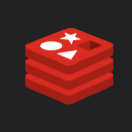| Redis Adds New Modules |
| Written by Kay Ewbank |
| Friday, 10 July 2020 |
|
The Redis team has released several new modules. RedisRaft is brand new and still under development, while RedisAI and Redis Gears were announced a year ago, and are now generally available. The announcements came while Redis was already in the news due to its original founder stepping back from an active maintenance role.
Redis is an open source, BSD licensed, advanced key-value store where the keys can contain strings, hashes, lists, sets and sorted sets. It’s popular for web development as a session state store because of its simplicity and rich data structure support. The completely new module RedisRaft makes it possible to operate a number of Redis servers as a single fault-tolerant, strongly consistent cluster. As its name suggests, it is based on the Raft consensus algorithm and an open-source C library that implements it. The developers say RedisRaft brings a new strong-consistency with strict serialization deployment option to Redis and the Redis ecosystem. The new module makes it possible to use Redis along with Redis’ existing clients, libraries, and data types in beyond-cache scenarios requiring a high level of reliability and consistency. Two of the other 'new' modules were announced a year ago, but are now generally available. RedisAI can be used to run AI data models within Redis. It serves tensors and executes deep learning models, making use of a new tensor data type, along with commands that let you get and set tensors from your deep learning client. The module supports deep learning frameworks including TensorFlow, PyTorch, and TorchScript. RedisGears is a new serverless engine designed to enhance event-driven data processing. It supports transaction, batch, and event-driven operations within Redis, close to the data, to make such operations much faster. It supports full Python syntax and has a low level C API, and can be used to build an operations pipe (OPP) that each key in Redis will pass through. Results from the first operation will pass as input to the second operation, results from the second operation will pass as input to the third operation, and so on.
More InformationRelated ArticlesRedis Adds TimeSeries And AI Support |
| Last Updated ( Friday, 10 July 2020 ) |
